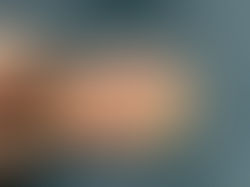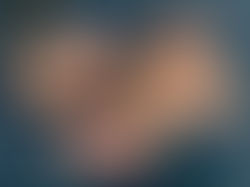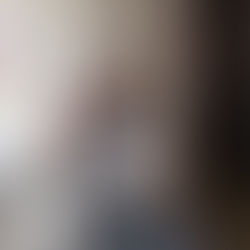
Trilce Tarpuy / Trilce Cultivar
Contemporary agricultural art / performance of non-human bodies, since 2022.
Copyright protected. Cultivar Trilce is a project conceived and directed by artist Emilio Santisteban. Those participating in the engraving of poems are co-authors, alongside the artist, of the seed poem they engraved. The institutions collaborating during the periods 2023, 2023 or later constitute valuable sources of support, which does not imply artistic or intellectual co-authorship of the project. Any attempt at self-attribution that violates current copyright laws is prohibited.
Cultivar Trilce (since 2022) is a participatory process-based Eco-social art practice and performance work featuring More-than-human entities with expanded elements of printmaking, sculpture, and painting, by the artist Emilio Santisteban in collaboration with 75 participants to date. It is curated by Lizet Díaz Machuca and photographed and assisted by artist Kenyi Quispe Granados. In 2022, the agricultural direction was carried out by Honorato Mora and Celia Morales; in 2023 by Nicolás Saywa and Germania Madera. In 2022 and 2023, the production was led by Marco Chevarría of the Willka T'ika Center for the Conservation of Andean Natural and Cultural Heritage.
The work links Transdisciplinary artistic practice of contemporary art (Contemporary performance practice, process art, participatory art, visual poetry and object poetry) and traditional culture (potato ecofact, agricultural processes and Quechua language), linking the centenary of the first publication of César Vallejo's poetry collection Trilce, the existing published Quechua translation of said poetry collection (Meneses 2008), the potato varieties developed in Peru and preserved in Cusco and the terrace system developed by the original Andean cultures.
The first two years were developed on an Inca platform that the Willka T'ika Center is highlighting in the Yucay Archaeological Complex (Urubamba, Cusco). Throughout the work, in five agricultural cycles between 2022 and 2027, the 77 poems of Trilce, in Quechua version, will be engraved on potatoes and cultivated together with them, symbolically becoming seed-poems, flower-poems and food-poems thanks to the participation of local farmers.
The first stage (2022), now complete, began on May 9 with the effective start of the collaborative poetry recording, which continued until August 10. Sowing took place on August 11. Flowering occurred in mid-November, and harvesting took place on January 9, 2023.
The second stage (2023) began with the collaborative recording of poems XVI to XXX of Trilce in Quechua in June 2023 in Lima. The seed poems were planted on August 1. Finally, the food poems were harvested on December 10, 2023.
Pre-production pause and rethinking of the social and institutional context (2024). During 2024, we will manage important changes aimed at boosting audience participation and strengthening our network of partner institutions. We will also build funding for the third phase through new institutional sponsorships and personal micro-sponsorships. The goal is to locate Cultivar Trilce in environments where it connects intensely with the population and with the organizations that decide to involve you in the project.
The third stage of the project (2025/2026/2027) is planned to begin between June and July 2025* with the collaborative engraving of poems XXXI to XLV of Trilce in Quechua, in a location to be determined based on the greatest feasibility of broad and intense participation of people and institutions, as well as where the best financial and production options are found. Planting will take place on August 9, 2025, on the full moon and the day of Pachamama. Depending on the weather, soil, and crop characteristics, harvesting may occur between November and December.
* Due to the artist's health issues, which may require up to a year of care, the aforementioned dates may be postponed.
In 2022 and 2023, the following people joined us, recording Trilce's poems in Quechua on potatoes, and we are immensely grateful for their co-authorship: Irma del Águila, Ariel Alcalde, Stephano Alcántara, Jimena Álvarez, Miluska Alzamora, Jhan Carlos Amante Borja, Walter Antezana, Luz Antonio, Walter Aparicio, Fiorella Arce Monzón, Fabiola Arroyo, Carla Avila, Fanny Barba, Francisco Bardales, Jorge Barrera Begazo, Carla Bedoya, Luz María Bedoya, Christian Bernuy del Campo, Andrea Calderón, Adriana Castillo, Alfonso Castrillón Vizcarra, Lourdes Chara Estrada, Paola Katherine Chipa Guillen, Sebastián Chumbe, Huberth David Chumbisuca Huillca, Nilda Condori Chumbisuca, Edith Cristóbal. Eleazar Crucinta Ugarte, Delia Díaz Machuca, Teresa Edwards, Rosa Esquivel Escobar, Andi García Roque, Daniela Granda, Edinson Guerreros, Dione Huaman Borda, Maria Jesús Jimenez, Ricardo Lacuta, Isidro Lámbarri, Maria Julia Laos Vanini, Óscar Limache, Ariana Loli, Amelia Lopez, Brunella Martin Laos, Tina Martínez, Antonio José Medina, Luis Alberto Medina Huamani, Liliana Melchor Agüero, Samuel Mestanza Villegas, Daniela Napurí, Margarita Neyra, Estefany Nuñez, Richard Gabriel Ore Campero, Valeria Pacheco, Manuel Pantigoso, Andrés Poma Cáceres, Muriel Pucllas, Rebeca Ráez, Camila Rodrigo Graña, Mae Isabel Rodriguez Chavez, Ana Lucía Romero, Maria Angélica Rozas, Mijael Saldaña, Ingrid Natalia Sánchez, Kimberly Silva, Pier Solís Cerazo, Rocío Sulca, Ródemi Temoche Zenitagoya, Mariana Torres, Janina Trujillo, Christian Ugarte Bravo, Mauricio Vargas Osses, Magda Vega, Santiago Vera, Keani Zapata Del Río, Calypso Zuniga Leva.
In 2022 and 2023, Cultivar Trilce has had the support in Cusco of the Willka T'ika Center for the Conservation of Andean Natural and Cultural Heritage, with the generous loan of a plot of land in his Willka T'ika Botanical Garden project. He also received the support of the Ayacucho National Institute for Native Languages (INALO), with the help of their linguistic advice in Quechua.
In 2022, the work had the institutional support in Cusco of the National University of San Antonio Abad of Cusco.
In 2023, Cultivar Trilce has received the support of Lima Corriente Alterna School of Design, Art and Creativity, the Higher School of Photography Center of the Image, the Cultural Center of the National School of Fine Arts of Peru, and the Institute of Museological and Artistic Research of the Ricardo Palma University.
Cultivar Trilce was the winning project—for its first two years—of an Economic Incentive for Culture from the Ministry of Culture of Peru.
Resumen generado por IA.
Cultivar Trilce es un proyecto participativo de arte agrícola y performance de cuerpos no humanos iniciado en 2022 por Emilio Santisteban. El proyecto vincula el arte contemporáneo con la cultura tradicional andina, utilizando la papa como medio artístico. Consiste en grabar los 77 poemas de "Trilce" de César Vallejo (en su traducción quechua) en papas, que luego se cultivan como "poemas-semilla", "poemas-flor" y "poemas-alimento". El proyecto se desarrolla en tres etapas: la primera (2022) incluyó el grabado de poemas, siembra, floración y cosecha; la segunda (2023) continuó con poemas XVI-XXX; y la tercera (2025-2027) abarcará poemas XXXI-XLV. Colaboran más de 75 participantes, junto con instituciones como el Centro Willka T'ika, INALO, la Universidad Nacional San Antonio Abad del Cusco y la Escuela Nacional de Bellas Artes. El proyecto recibe financiamiento de recursos propios y un Incentivo Económico para la Cultura del Ministerio de Cultura del Perú.
"The project will pay tribute to Cesar Vallejo's poetry collection Trilce, 100 years
of its publication, through an interesting artistic project that links poetry, the
Quechua, agricultural culture and contemporary art. It will be implemented in the city of
Cusco, where the poem will be transferred to the object of the potato, and will actively involve
farmers. In addition, a photographic exhibition will be held showing the entire process.
involving the community. Finally, the project leader has a
extensive experience that guarantees the successful implementation of the project."
Jury
MINCUL Cultural Incentives 2022






Copyright protected. Cultivar Trilce is a project conceived and directed by artist Emilio Santisteban. Those participating in the engraving of poems are co-authors, alongside the artist, of the seed poem they engraved. The institutions collaborating during the periods 2023, 2023 or later constitute valuable sources of support, which does not imply artistic or intellectual co-authorship of the project. Any attempt at self-attribution that violates current copyright laws is prohibited.





























































































